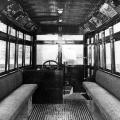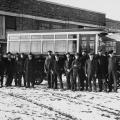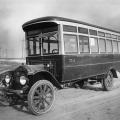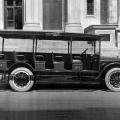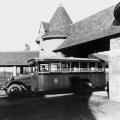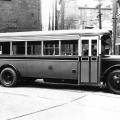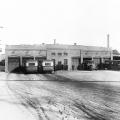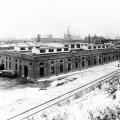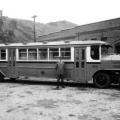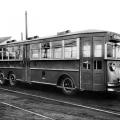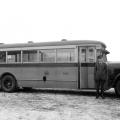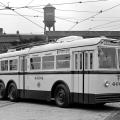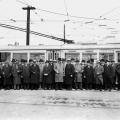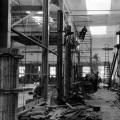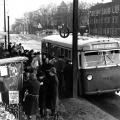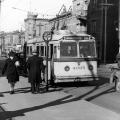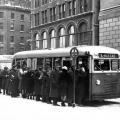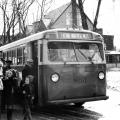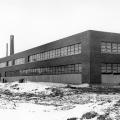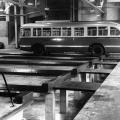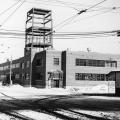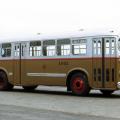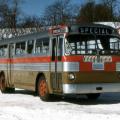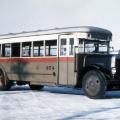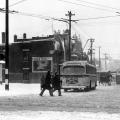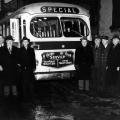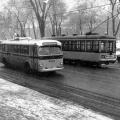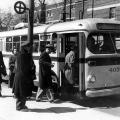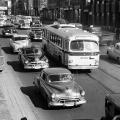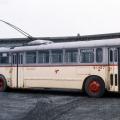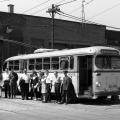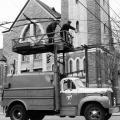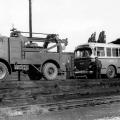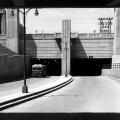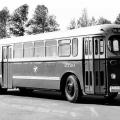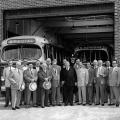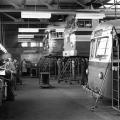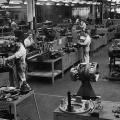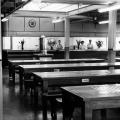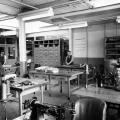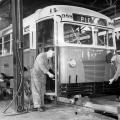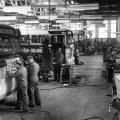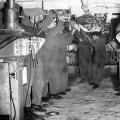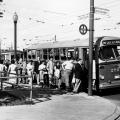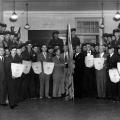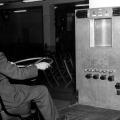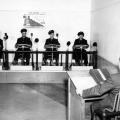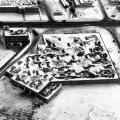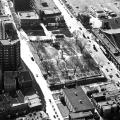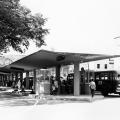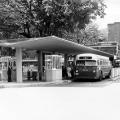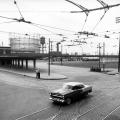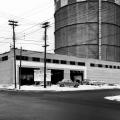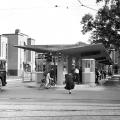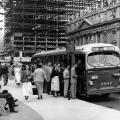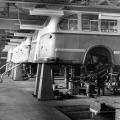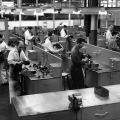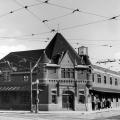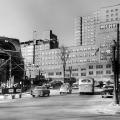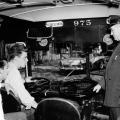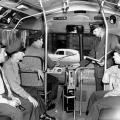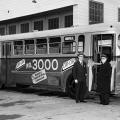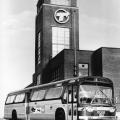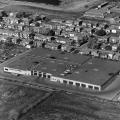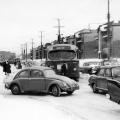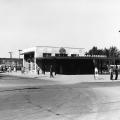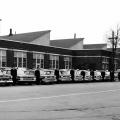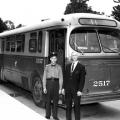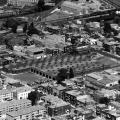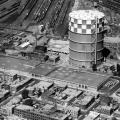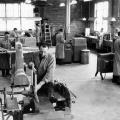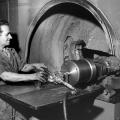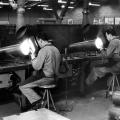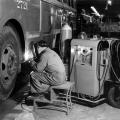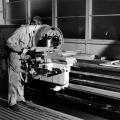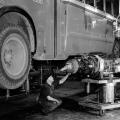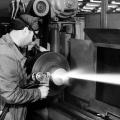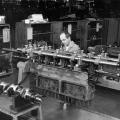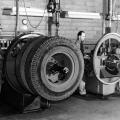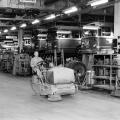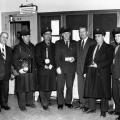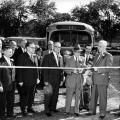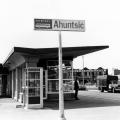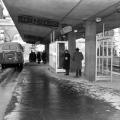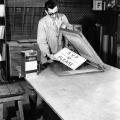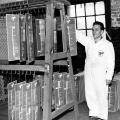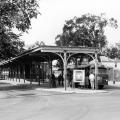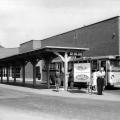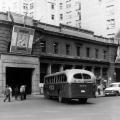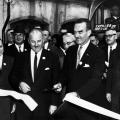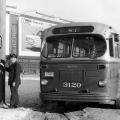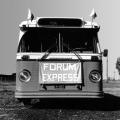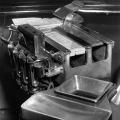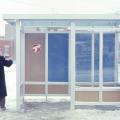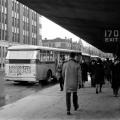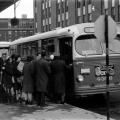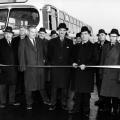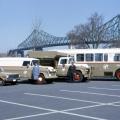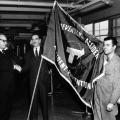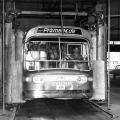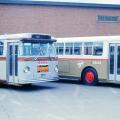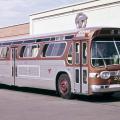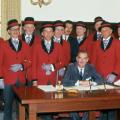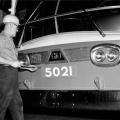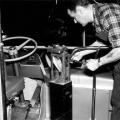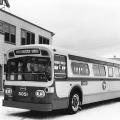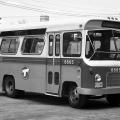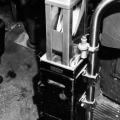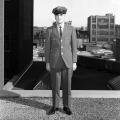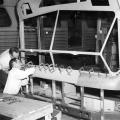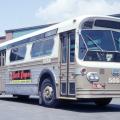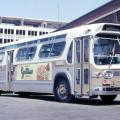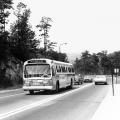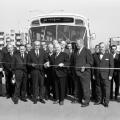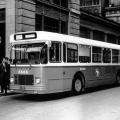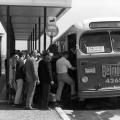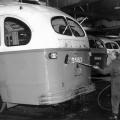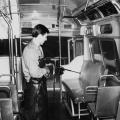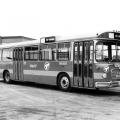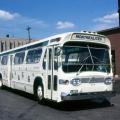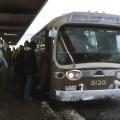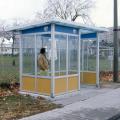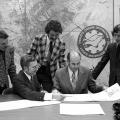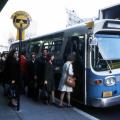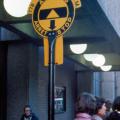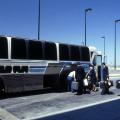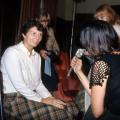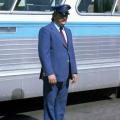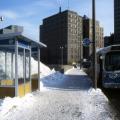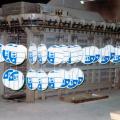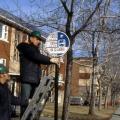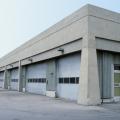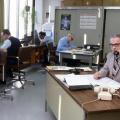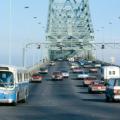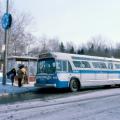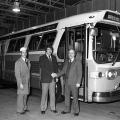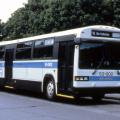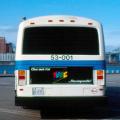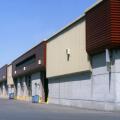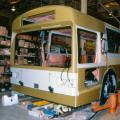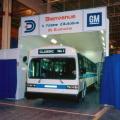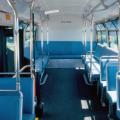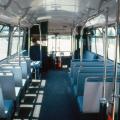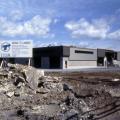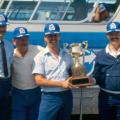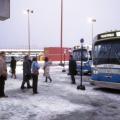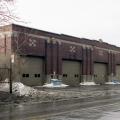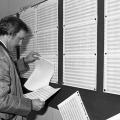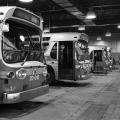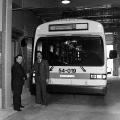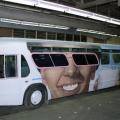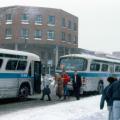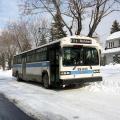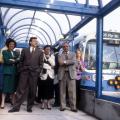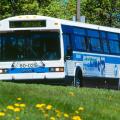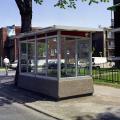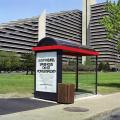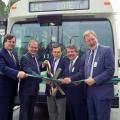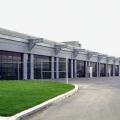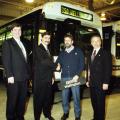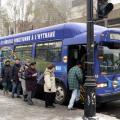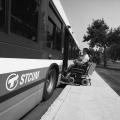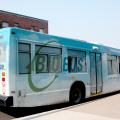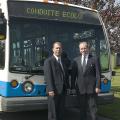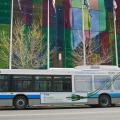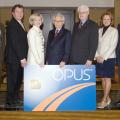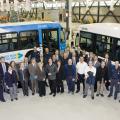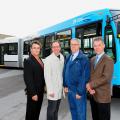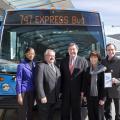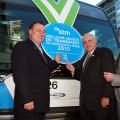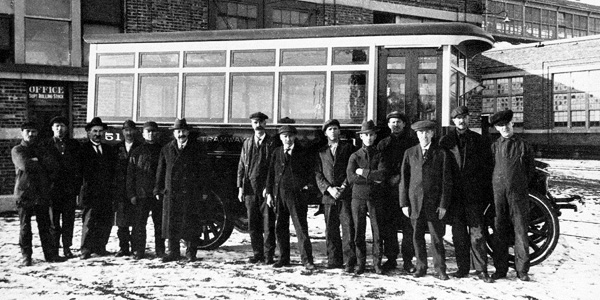
First bus in Montréal, a White truck converted by the Company's workers (1919)
The first buses appeared in America and Europe at the beginning of the 20th century. Initially, the Montreal Tramways Company (MTC) preferred tramways to buses, since buses were less comfortable and could not carry as many passengers. However, the company needed to replace several parts of the rail crossing on Saint-Étienne Street (now Bridge Street). Given the significant costs involved, the MTC opted to replace the tramway with buses. Two White trucks were converted into buses at the company’s Youville repair shops and the new service was launched on November 22, 1919. In 1921, two more trucks were converted into buses and assigned to the shuttle between Berri Street and St. Helen’s Island.
After these test runs, the time had come for the MTC to give a real chance to the bus, which had continually improved over the years. In 1925, the company created a bus division and launched three new routes in quick succession: Lachine-Montreal-West (August 6), Lachine-LaSalle (August 15) and Sherbrooke Street (August 19). This time, the MTC didn’t build its own buses, turning instead to American suppliers. New routes were quickly created on Saint-Hubert Street, in Outremont, in Verdun, and between the Bordeaux and Cartierville areas. The number of buses increased from 24 to 55 and the company opened its first bus garage in Saint-Henri, which had a capacity of 85 vehicles.
Click on these STM Archives pictures to enlarge them.
Several models of buses were tested, including the famous “Atwater Street Monster” built by the American company Versare. In 1931, a 35-vehicle garage was built on Côté Street, near the company’s head office. The network also grew in 1931 with service to Longueuil and St. Helen’s Island via the new Havre Bridge (Jacques-Cartier Bridge). The bus division now had 155 buses carrying over 20 million passengers yearly. Beginning in 1936, the bus replaced the tramway on certain routes and new garages were opened in Montreal East and on Mont-Royal Avenue. The following decade saw the opening of the Bellechasse (1941), Charlevoix (1944) and Villeray (1947) garages.
Seven trolleybuses built by the English company AEC were put into service on Beaubien Street in Montreal on March 29, 1937. It was the first modern trolleybus service in Canada, after unsuccessful tests in Toronto and Windsor, Ontario. Ten years later, the MTC decided to continue the experiment and acquired 40 more trolleybuses. These vehicles, which were built by the Canadian Car company, were put into service on Beaubien Street and, starting in 1949, on Amherst Street and Christophe-Colomb Avenue. The MTC received another 40 trolleybuses in 1949 and decided to deploy them on Bélanger Street. The number of trolleybuses increased from 80 to 105 in 1952, but then remained unchanged until this means of transportation was abandoned in 1966.
Click on these STM Archives pictures to enlarge them.
The municipalization of public transit in 1951 led to all of the tramways being replaced by buses. The new Montreal Transportation Commission (MTC) acquired 1,300 buses, including a thousand of the Canadian Car-Brill model. The Commission set about transforming the old tramway sheds and expanded its shops at the Crémazie Plant, built in 1948. Finally, it opened the Namur (1954), Frontenac (1956) and Saint-Michel (1957) garages, as well as the Atwater and Frontenac terminuses (1956). The first express bus service was launched on Saint-Denis Street in 1955 and a completely new model of bus, the New Look from General Motors, was put into service in 1959.
The MTC’s service territory grew with the addition of new bus routes in Saint-Léonard (1963), Rivière-des-Prairies (1966), Jacques-Cartier (city subsequently merged with Longueuil in 1966) and Anjou (1966). Unveiled in 1962, the Commission’s new modern bus shelter was installed at certain key locations in the network. In 1965, fare zones were abolished to allow for fare integration between the buses and métro. The métro’s launch in October 1966 had a major impact on the bus network: dozens of routes were created, changed or eliminated. New magnetic tickets and new connections were also introduced.
Click on these STM Archives pictures to enlarge them.
In 1970, the Montreal Transportation Commission became the Commission de transport de la Communauté urbaine de Montréal (CTCUM). That same year, the very first Origin-Destination survey was conducted to help the Commission adjust its network based on the population’s needs. The Saint-Denis garage was again expanded in 1971, while the Legendre garage opened in 1973. The first Métrobus service was launched on Newman Boulevard in LaSalle in 1974. Also in 1974, exact-fare payment was implemented aboard buses, which would now be painted white and blue. Finally, in 1977, a new era began when Francine Maltais became the first woman to drive a CTCUM bus.
The 1980 launch of the A-U-T-O-B-U-S telephone information line and the Carte Autobus-Métro (CAM) changed the habits of the CTCUM's clientele, which grew with the start of regular service in Montreal’s West Island, an area previously unserved by the Commission. Also in 1980, the CTCUM received the mandate to serve 61 of Montreal’s urban municipalities, which it would do for a number of years. New garages were opened in Anjou (1983) and Saint-Laurent (1985), while a new bus model, the Classic, was deployed in 1983. The Commission became the Société de transport de la Communauté urbaine de Montréal (STCUM) in 1985 and introduced its first night-time bus network in 1988.
Click on these STM Archives pictures to enlarge them.
The first reserved lanes for buses were created on Pie-IX Boulevard in 1990. Other reserved lanes were added that same year on Du Parc Avenue, René-Lévesque Boulevard West and Chemin de la Côte-des-Neiges. Customer information was enhanced with the regular distribution of Planibus timetables starting in 1992, the introduction of the TELBUS schedule information system the following year and the launch of the company’s website in 1997. A major milestone in universal accessibility was reached in 1996 with the introduction of the first low-floor bus (LFB), and the first three wheelchair-accessible routes were launched in 1998.
In 2002, the STCUM became the Société de transport de Montréal (STM) and also launched its Biobus project to promote the use of biodiesel. That same year, the STM began its Fare Sales and Collection project aimed at deploying a new system using smart-card technology. In 2005, it began replacing fare boxes aboard buses and introduced the OPUS smart card in 2008. The STM deployed its first biodiesel-electric hybrid-drive buses in 2008 and its first articulated buses in 2009. The company also opened its new bus body shop and expanded the Legendre garage in 2009. Finally, the STM launched several new routes, including the 747 express between downtown and Montreal-Trudeau Airport.
Click on these STM Archives pictures to enlarge them.
